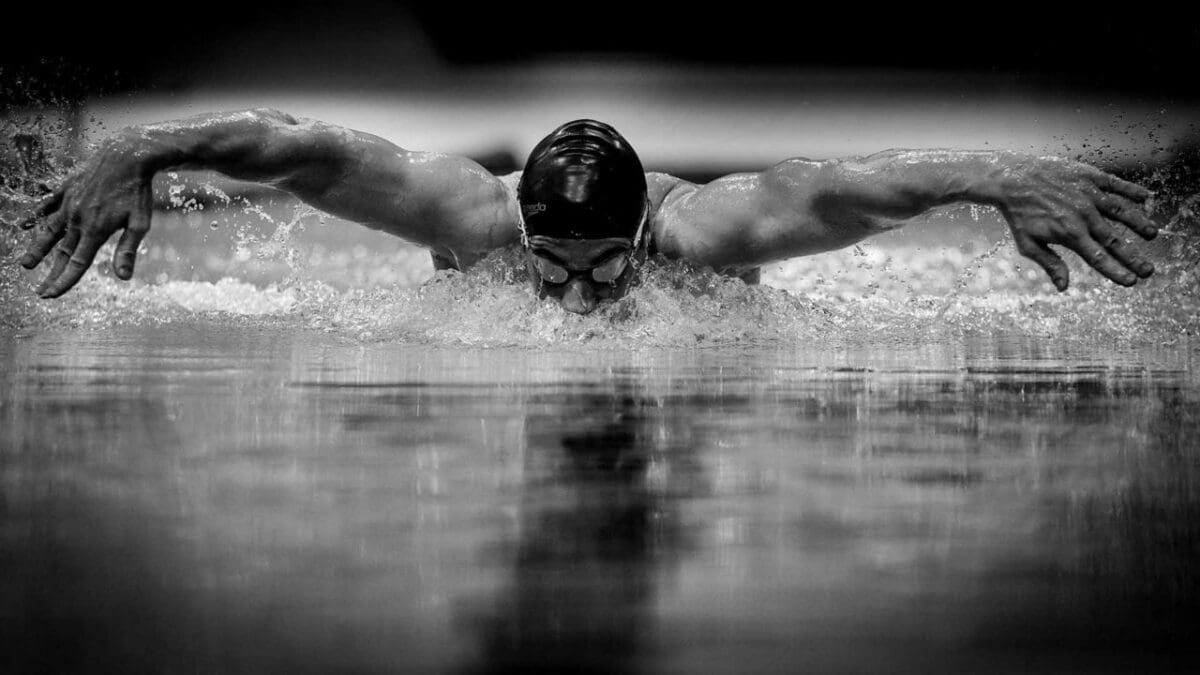I was recently invited by Sony to shoot with cameras such as the A7R III and A9 at the Olympic Aquatics Centre. Former Nikon ambassador and internationally acclaimed photographer, Bob Martin, was on hand to give some advice about how to make the best of the shooting opportunities and outlined his top tips for shooting sport as follows:
Look for the background
Whatever he’s shooting, Bob always tries to find a clean background. Before you start shooting, look for a position that will give a background that either complements the subject or is neutral. When photographing Chelsea playing football at Stamford Bridge, for example, Bob generally prefers to shoot from the side of the pitch rather than behind the goal because the background is better.
When we were photographing diving at the Aquatics centre Bob recommended shooting from alongside the diving boards with a long lens looking up so that the divers were against a clean blue background. He also advised trying to capture the moment the divers leave the board and to aim to keep the board in the frame to give context.
2. Find different angles
As a professional photographer at the top of his game, Bob gets to attend the biggest, most prestigious sports events of the year. Naturally, there are lots of other photographers at these events and they’re all jostling for the best shooting position. As a consequence, Bob has learned to look for alternative shooting angles, somewhere that will give him a different shot from all the others. This might mean shooting from the top of a floodlight or the back of the stand at Centre Court, Wimbledon.

3. Shoot lots and keep shooting
Modestly, Bob says that sometimes you get lucky when you’re photographing sport, but it’s probably fairer to say that he makes his own luck by being in the right place at the right time and capturing lots of images.
He freely admits that he’ll shoot lots of images knowing that many won’t make the cut, but he keeps shooting because he’s looking for that special picture. And once he’s got a great image, he’ll spend the rest of his time at the event trying to better it.

4. Wait for the moment
While Bob recommends shooting plenty of images, he also advises waiting for the right moment – that point at which all the elements come together. This could be when a tennis player dives for a ball against the carefully identified clean background or the point when the player glances up.
Bob now routinely uses a Sony A9 for his photography and its 20fps (frames per second) shooting capability gives him a greater chance of capturing the perfect moment.
5. Looking for the toughest spots
Sports photography is often about telling the story of the day or the event. With this in mind, Bob doesn’t tend to bother too much about trying to capture the action at the finish line – there are usually plenty of other photographers there anyway. Instead, he’ll look for a point in the course that’s going to have the most action or prove the most testing for the athletes. With whitewater canoeing, for example, he looks for a troublesome pocket of water that’s likely to catch-out the competitors and deliver an interesting photographic opportunity.
6. Watch the athletes
Observing the athletes and how they behave can help you find more interesting photographic opportunities. For example, Bob noticed that Usain Bolt tended to look at the clock at the end of a race so at one event he decided to shoot from alongside the clock. As a result, he got a shot of Bolt looking straight at the camera.
And at a recent muddy obstacle race, Bob spent most of the day photographing athletes as they emerged from a muddy pool of water because he noticed that they all shook their heads and it sent splashes of muddy water flying.
7. Fill the frame
Lots of photographers line-up a shot with a particular framing in mind and as the athletes get closer than they intended, they stop shooting. Bob recommends that you continue to shoot as the tighter, frame-filling images can be more interesting than you might expect.
8. Shoot wide for a sense of place
Although telephoto lenses are most commonly associated with sports photography, Bob likes to shoot with wide-angle lenses as well to capture a sense of the venue and the spectacle of the occasion.
About Bob Martin
Bob Martin has won the British Sports Photographer of the Year title on three occasions and is the NPPA Sports Photojournalist of the Year 2017.
After photographing all the all the major sports events and the last 15 Olympic Games Bob was appointed as Photo Chief for the London 2012 Olympics. He was a consultant to the Rio 2016 Olympic Organising Committee and is now helping to the photography at the Tokyo Olympics in 2020.



